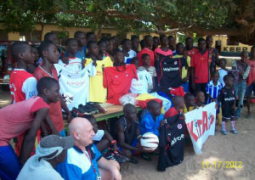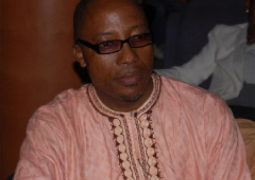The Borassus Family and the EU Desk Officer recently held their last concertation meeting in The Gambia at the Paradise Suites Hotel.
The Borassus Research project entitled, "The Environmental and Socio-Economic Contribution of Palm Geotextiles to Sustainable Development and Soil Conversation," is used for field and laboratory studies to evaluate the effectiveness, sustainability and economic viability of Geotextile mats. These mats are made from Borassus palm leaves as a means to combat soil erosion and promote soil conservation and are constructed from leaves of the black rhun palm (Borassus aethiopium).
According to Dr. Jonsyn-Ellis, the project's Gambian representative, geotextiles production have been conducted by the senior Research Fellow in five communities, naming them as "Sinchumbalia, Sanyang Fala-Kindesibelle Durumakolong, Kabekel and Dasalami. Villagers, predominantly women are now aware of another potential use of the palm and have committed themselves to the establishment and development of nurseries and large plantations of Borassus aethiopium," she said.
The project, she said consists of thirteen work packages using teams based in Europe (
It agreed that Borassus palm leaves significantly decrease water runoff and soil erosion, assists conservation of soil water and decrease evaporation from soil during dry periods.
They provide organic content matter to stabilize the soil, making them usable with cohesive soil and exportable.
According to Mike Fullen, the Project Coordinator based in the University of Wolverhampton, UK, said, "It is but fitting that the Borassus Project developed from the initial work of a Ph.D. student, Katy Davies on Geotextile mats made in The Gambia should hold its last Concertation Meeting in the country in which the idea was first perceived," he said.
At the end of its weeklong stay, the Borassus Family paid visit to communities that were trained in geotextile mat production and other interesting sites in The Gambia.
Read Other Articles In Article (Archive)
KAC presents cleansing materials to Barra military camp
Sep 5, 2014, 10:12 AM



